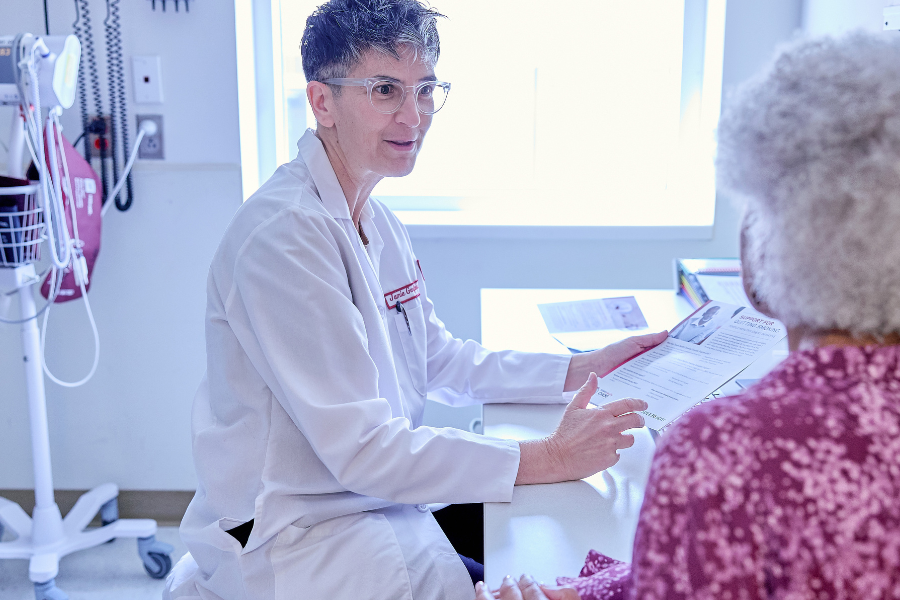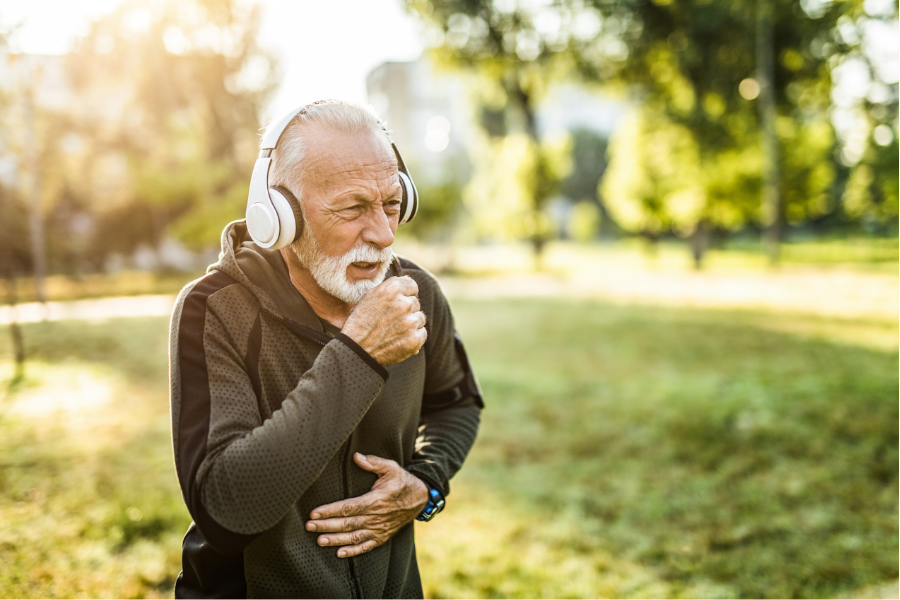As an exercise physiologist, I support participants in Temple Lung Center’s Pulmonary Rehabilitation Program, helping people who have lung conditions live better and feel better.
Many people know that outpatient pulmonary rehabilitation, or rehab, involves exercise training. But it’s much more than that. Pulmonary rehab combines:
- Exercise
- Lung disease education
- Support to help people manage their symptoms and enjoy a more active life
Who can benefit from pulmonary rehab?
Pulmonary rehab helps people who have lung conditions, including:
- Chronic obstructive pulmonary disease (COPD)
- Interstitial lung disease
- Pulmonary hypertension
- Sarcoidosis
Pulmonary rehab can also help people before and after lung transplant surgery.
Depending on your specific lung condition and your health, the benefits of pulmonary rehab can include:
- Reduced shortness of breath. You’ll have tests before and after your pulmonary rehab program to see if your lung function has improved.
- Increased exercise capacity. Participants often walk farther with less breathlessness than before they started rehab.
- Improved quality of life. Your symptoms, activities, social interactions, and mood may improve.
- A reduced risk of hospital stays. Pulmonary rehab can help reduce flare-ups of your lung disease.
A multidisciplinary approach
Although it can vary, you will likely attend pulmonary rehab two to three times a week for a few months.
You will be cared for by a team that includes specialists with a range of expertise. These include respiratory therapists, doctors, nurses, exercise physiologists, and often other support specialists like dietitians.
Together we will design a pulmonary rehab program just for you. The program will take into account your personal goals. Some people want to be able to travel safely and comfortably. Others may want to be able to walk around the grocery store without running out of breath.
Your rehab program will consist of several components, including:
Exercise
You will learn to exercise safely while a highly trained staff member monitors your breathing and other vital signs. You may use treadmills, stationary bikes, and other equipment. The exercise plan you follow will be tailored to your abilities and needs.
Some of your exercises will help you build stronger muscles for walking and breathing. You will also learn aerobic exercises that increase your endurance.
Increasing your fitness helps you walk farther and do more of the things you want and need to do with less shortness of breath. Your rehab team will give you tests before and after your program to measure your lung function.
Lung disease education
Knowledge can help you cope with your lung disease better. You’ll learn about:
Nutrition
Your treatment may include referral to a nutrition specialist or dietitian who teaches our rehab participants how to choose a variety of healthy foods with the right amount of nutrients. A proper eating plan can help you feel better and more energetic for daily activities. It also can help you manage your weight and maintain your muscles, both of which can help you manage your lung condition.
Managing daily life
You will learn about your specific lung condition and how to manage it. The topics will be customized to your needs. For example, it might include:
- Using medications and inhalers
- Avoiding lung irritants
- Understanding oxygen therapy
- Strategies to avoid bending and lifting
- Getting recommended vaccines that can help keep you healthy
Breathing techniques
Respiratory therapists will teach you strategies that can help make it easier to breathe. One technique is pursed-lip breathing, which helps with shortness of breath. You may also learn how to conserve your energy. This will enable you to do more and become less tired.
Emotional support
Living with a chronic lung disease can be physically and emotionally challenging. In rehab, you’ll learn ways to manage stress. In addition, you’ll have opportunities to speak with a professional about your feelings.
Group rehab sessions offer another level of emotional support. You’ll meet other people experiencing life with lung disease, which can feel reassuring. Many friendships have been formed in pulmonary rehab at Temple.
How to get pulmonary rehab
The Temple Lung Center offers pulmonary rehab at three convenient locations. You will need a prescription from a provider to attend a pulmonary rehab program. I encourage you to talk with a doctor to find out if rehab is right for you. It can be a crucial part of your treatment for lung disease, along with other therapies a doctor may prescribe.
See a leading lung specialist
The Temple Lung Center team includes experts such as asthma and COPD specialists and nationally renowned lung transplant surgeons. They are known for their innovative treatments, cutting-edge research and compassion.
To make an appointment with a Temple pulmonologist, call 800-TEMPLE-MED (800-836-7536) or schedule an appointment online.
Helpful Resources
Looking for more information?

